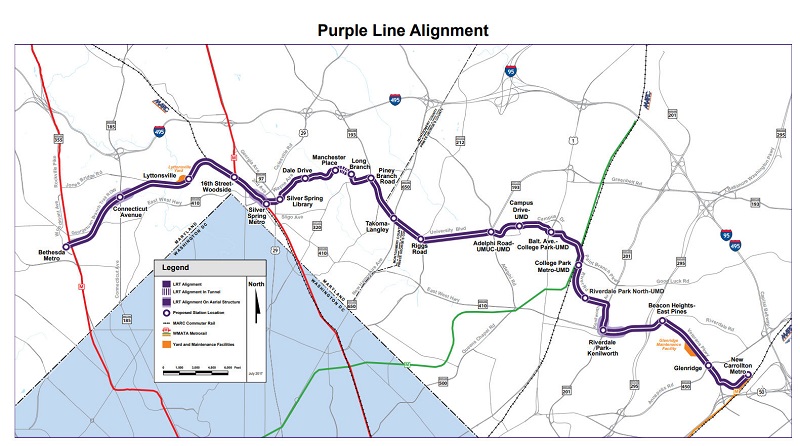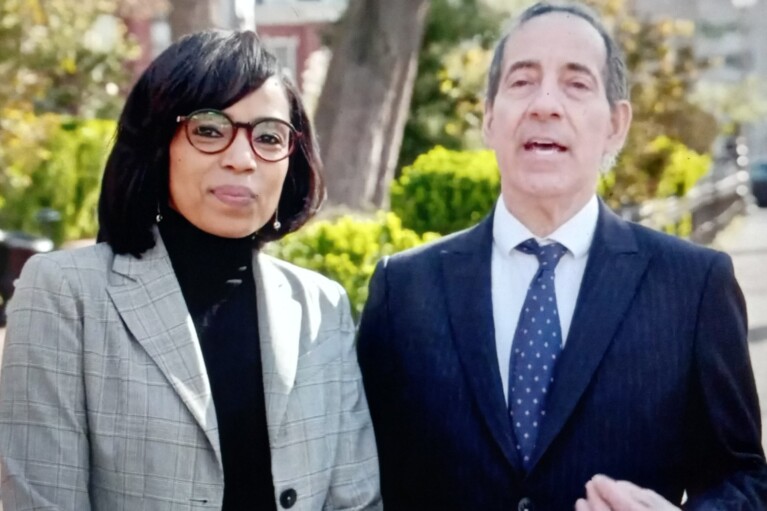On Transit Equity Day, Experts Call for Bus Rapid Transit, Electric Vehicles in D.C. Suburbs

Public transportation in Prince George’s and Montgomery counties is unreliable and unsafe, community members and transit experts asserted in a panel discussion Tuesday night — an event to commemorate Transit Equity Day.
Falling on Rosa Parks’ birthday, Transit Equity Day was created to advocate for safe and reliable public transportation, especially for communities of color and low-income communities, where residents often don’t have adequate access to public transit.
“Our public transportation system has been designed to get white collar workers from the suburbs into the city,” said Willow S. Lung-Amam, associate professor of Urban Studies and Planning at the University of Maryland. She was speaking at a forum held at the Hyattsville headquarters of CASA De Maryland, the immigrants’ rights organization.
Lung-Aman says because housing prices are much higher near the Metro, people with lower incomes live further away and have limited access to public transportation. They often rely on buses, which take a long time and can be difficult to access.
Carroll Thomas, a local bus operator and vice president of the Amalgamated Transit Union, said he has personally seen how congested roadways and long bus routes can impact a community.
“They become your family,” Thomas said. “People take 45 minutes to an hour to get to the grocery store, the elderly spend more money to get to their doctor’s appointments, kids are traveling a lot further to go to school. You really see how this affects the community as a whole.”
The Purple Line light rail line, set for completion between 2022 and 2024, will expand access to the Metro with 21 new stations extending from Bethesda to New Carrollton. But community members are concerned about the rise in housing prices that typically follow a new transit line.
Dave Anspacher from the Montgomery County Planning Department says that putting in a new transit line doesn’t guarantee that people can access transportation safely. There are limited sidewalks and crosswalks, and on average, 400 pedestrians are struck by vehicles each year in Montgomery County.
“We have a bright and shiny train, but we’re not focusing on how people are going to get there,” Anspacher said.
“We ask, why wasn’t the person using the crosswalk? Well there wasn’t a crosswalk,” he said. “People are dying because we have created a situation where we prioritize automobiles.”
Anspacher said because the Metro doesn’t serve everyone, and local bus trips can take a long time, the missing element is Bus Rapid Transit, an affordable bus-based system that designates specific lanes to the BRT.
Montgomery County is working to implement a BRT system, called “The Flash,” Anspacher said.
But, Sacoby Wilson, associate professor of Applied Environmental Health at the University of Maryland, explained that in order to have more walkable, livable communities, policymakers not only need to reduce the number of vehicles on the road, but also need to bring schools, infrastructure and jobs back to neighborhoods,
“Then you won’t need that type of transit to take you out,” he said.
Wilson said residents of communities that experience transit inequity are overburdened by traffic pollution are more susceptible to asthma, asthma attacks, stroke, and cancer.
“We must transition to electrification if we are going to solve that part of the problem,” Wilson said.
Both Montgomery County and Prince George’s County received grants last year to expand clean energy, electric buses.
Earlier in the day Tuesday, Montgomery County Councilmember Evan Glass (D) joined riders on a bus from Silver Spring to Rockville to attend a Montgomery County Council meeting where the Council issued a proclamation to declare Feb 4 as Transit Equity Day.
“It’s important because we want commitment from elected officials that they are invested in public transportation,” said Shruti Bhatnagar, Montgomery County chapter director for the Sierra Club. The Sierra Club helped organize the event, along with several local labor unions and community advocacy organizations.
Elected officials from the two counties attended the panel discussion, including Prince George’s County Councilmembers Deni Taveras (D) and Dannielle M. Glaros (D), and Montgomery County Councilmember Gabriel Albornoz.
“Transit equity is not just about Transit Equity Day. This is not a conversation for just one day,” Bhatnagar said. “Having access to public transportation that works for each and every individual is a basic right.”



 Creative Commons Attribution
Creative Commons Attribution